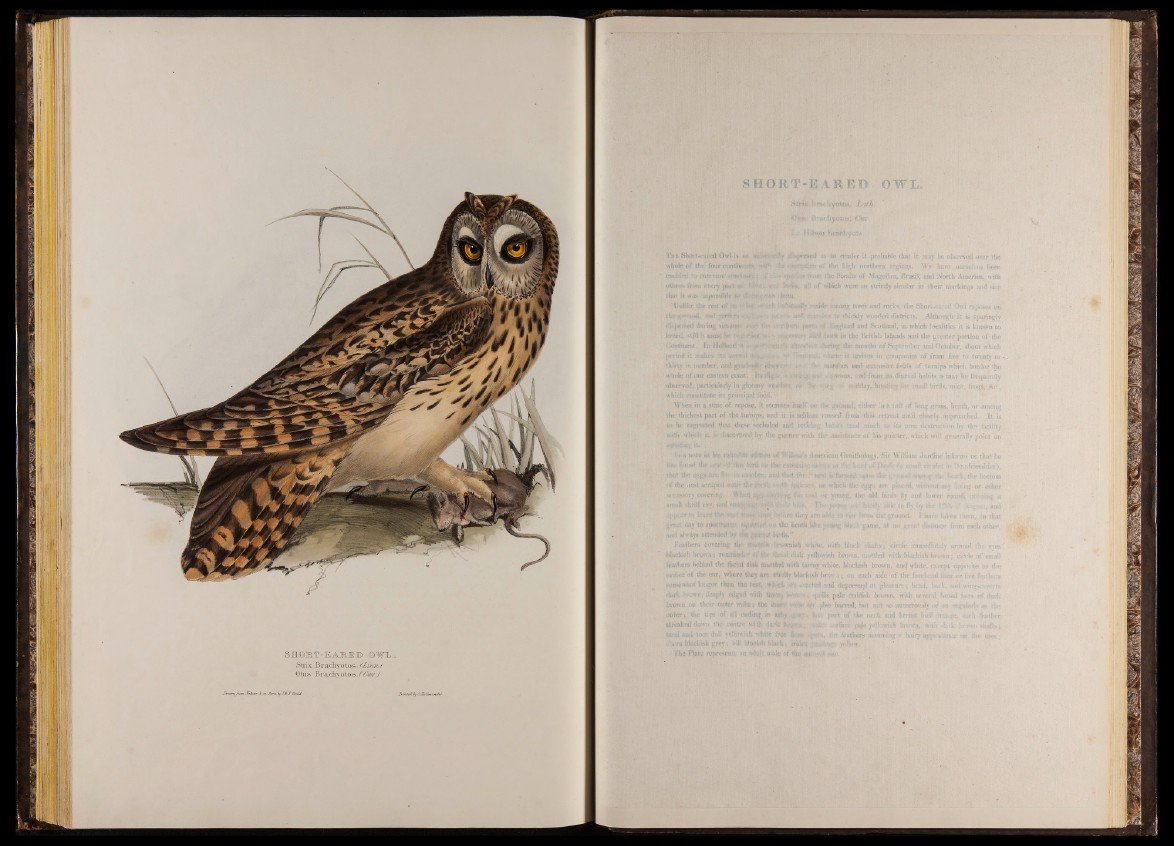
Strix Brachyotos; flmyo. j
Otus Brachyotos;^<iW./
SH OR T -E A R E D OWL
The Short-eared OwJ-ii. as to render it probable that it
whole of (be four, contine;1?!*. *¡$$1 of the high northern roston*.
emjiifr« to tfOfnniire? w Irom the awaits of Magellan, Krasd, and North America, with
others iroio erery paurti fortify of which were so strictly similar in t heir markings and sbt
' ' 5 Jo’iikc fife rfe!- of %■ $wijj$ rigide among trees and rocks, the Short-earod Owl reposes on
iPÉSÉ 'Hfl «Ht&'dfo* to thickly wooded Æstriets. Although it is sparingly
iSiu'Hig stiWitfWô’ xMAli ctfijSj^iaJid and Scotland, in which localities it is known to
still it ■ srmi^ ‘%f^*• •*!-• hhnü SnMib « the British m u and the greater portion of the
period it snakes ; isji i 'a^îivas. in companies of iron* five to twenty of
ihirxy in niHwher, atwf it!!»** muMwhes and e^iiswire fieklk'Of turnips'which border the
li$U% of our astern const« .liv ii%$i ■■■.■.;■■;/ ht ü&'i ■ > ■;ô\m>us, aod^rato.:it^<diii>*i>âl habits it naav be frequently
observed, particularly in gloomy VpÉM 4 *S ’•hw’ttf # wiiMay, |p | | l ÿ «mail birds, mice, fro^, Asc.,
which constitate its principal fowl
Wlieo in a state of repose, it secretes «self on the grçintKl, either ’n a toft of long grass, heath, or among
the thickest part of the.turnips, and it i$ ackËom roused from this retreat until closely approached. It is
to'- be wawK#<l that these secluded and retiring habits tend much to its own destruction bv- the facility
pith blackish
, and white.
: barred, t